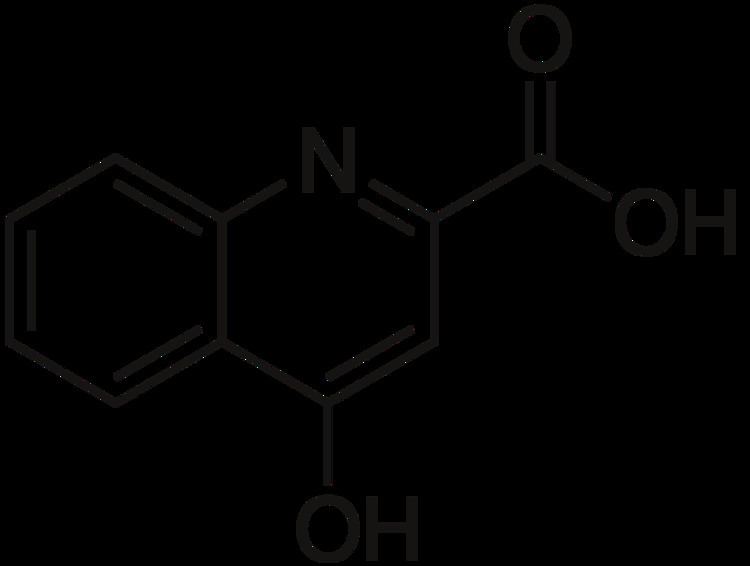Formula C10H7NO3 Melting point 282.5 °C | Molar mass 189.1675 g/mol | |
 | ||
What does kynurenic acid mean
Kynurenic acid (KYNA or KYN) is a product of the normal metabolism of amino acid L-tryptophan. It has been shown that kynurenic acid possesses neuroactive activity. It acts as an antiexcitotoxic and anticonvulsant, most likely through acting as an antagonist at excitatory amino acid receptors. Because of this activity, it may influence important neurophysiological and neuropathological processes. As a result, kynurenic acid has been considered for use in therapy in certain neurobiological disorders. Conversely, increased levels of kynurenic acid have also been linked to certain pathological conditions.
Contents
- What does kynurenic acid mean
- Medical vocabulary what does kynurenic acid mean
- Mechanism of action
- Role in disease
- Link to ketogenic diet
- References
Kynurenic acid was discovered in 1853 by the German chemist Justus von Liebig in dog urine, which it was apparently named after.
It is formed from L-kynurenine in a reaction catalyzed by the enzyme kynurenine—oxoglutarate transaminase.
Medical vocabulary what does kynurenic acid mean
Mechanism of action
KYNA has been proposed to act on four targets:
Role in disease
High levels of kynurenic acid have been identified in patients suffering from tick-borne encephalitis, schizophrenia and HIV-related illnesses. In all these situations increased levels were associated with confusion and psychotic symptoms. Kynurenic acid acts in the brain as a glycine-site NMDAr antagonist, key in glutamatergic neurotransmission system, which is thought to be involved in the pathophysiology and pathogenesis of schizophrenia.
A kynurenic acid hypothesis of schizophrenia was proposed in 2007, based on its action on midbrain dopamine activity and NMDArs, thus linking dopamine hypothesis of schizophrenia with the glutamate hypothesis of the disease.
High levels of kynurenic acid have been identified in human urine in certain metabolic disorders, such as marked pyridoxine deficiency and deficiency/absence of kynureninase.
When researchers decreased the levels of kynurenic acid in the brains of mice, the cognition was shown to improve markedly.
Kynurenic acid shows neuroprotective properties. Some researchers have posited that the increased levels found in cases of neurological degradation is due to a failed attempt to protect the cells.
Link to ketogenic diet
One controlled study kept mice on a ketogenic diet and measured kynurenic acid concentrations in different parts of the brain. It found that the mice on the ketogenic diet had greater kynurenic acid concentrations in the striatum and hippocampus compared to mice on a normal diet, with no significant difference in the cortex.
In response to the studies showing detrimental behaviour following increases in kynurenic acid the authors also note that the diet was generally well tolerated by the animals, with no "gross behavioural abnormalities". They posit that the increases in concentrations found were insufficient to produce behavioural changes seen in those studies.
